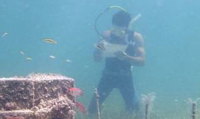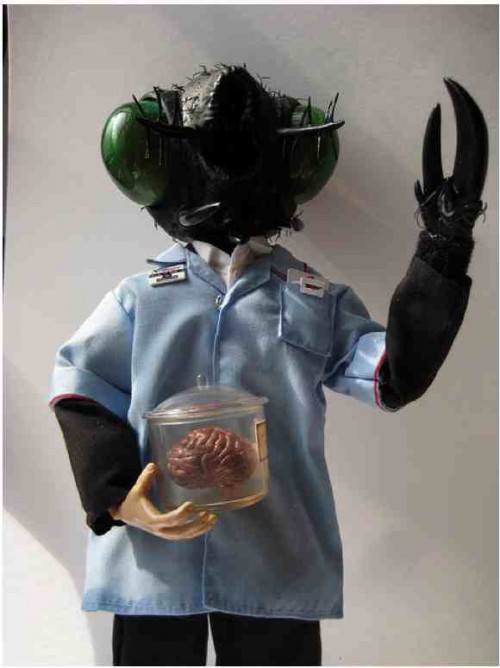Science
Please Poop, Mr. Cow!
Although modern science has been able to send a man to the moon, it has not been able to make cows poop on command. An effort to solve this shortcoming is described in a recent issue of Applied Animal Behaviour Science.The thing is, it would be really nice, for the purpose of general hygiene, if farmers could convince cows to stop pooping wherever they felt like it. So researchers devised a series of tests to see if prompts such as walking through a footbath, or being exposed to blasts of air or water, could stimulate bovine defecation. No such luck. The researchers concluded, "None of our tests reliably stimulated defecation, which seemed to occur most when cows were exposed to novelty."

Posted By: Alex - Sun Feb 17, 2013 -
Comments (7)
Category: Science, Experiments, Farming, Cows, Excrement
The Origin of Feces
This looks like an interesting book. [Amazon LinkThe author offers this summary of his book: "as soon as you have life, you have essentially poop. As life developed, the waste for one animal became food for another animal. We depend on a web of recycling of nutrients, and poop is an important part of that. People get sqeaumish but they shouldn’t be. If you don’t think of it as poop, but instead think of it as recycling nutrients, this is a really interesting and sustainable way to produce food."
Posted By: Alex - Sun Feb 10, 2013 -
Comments (5)
Category: Science, Books, Excrement
Fish Urine Research
Jake Allgeier studies fish urine. I guess someone has to. He says that there's a lot more of it than you would think, and it's a lot more important for marine environments than people realize. From redandblack.com:
Posted By: Alex - Thu Feb 07, 2013 -
Comments (7)
Category: Science, Fish, Body Fluids
New Gold
Scientists have discovered a bacteria that ingests toxic mine runoff and excretes gold. You can't teach a trick like that!
Posted By: Alex - Tue Feb 05, 2013 -
Comments (2)
Category: Science
Life Imitates THE FLY


Full article here.
Posted By: Paul - Fri Jan 18, 2013 -
Comments (3)
Category: Beauty, Ugliness and Other Aesthetic Issues, Health, Insects and Spiders, Science, 1950s
The Science of Scantily Clad Avatars
Researchers Anna Lomanowska and Matthieu Guitton spent a year examining scantily-clad avatars in the game Second Life in order to determine just how much skin they show — and whether the female avatars show more skin, on average, than the male avatars. A tough job, but someone had to do it! They discovered that "virtual females disclose substantially more naked skin than virtual males." This adds to the growing body of evidence that pretty much everyone likes looking at naked women. (Advertisers have known this since forever.) Their full article can be read at PLOS ONE.
Posted By: Alex - Sat Dec 29, 2012 -
Comments (5)
Category: Science, Sexuality, Women, Videogames and Gamers
How Cold Is It?
Watch what happens to boiling water thrown out the window in Siberia in the winter.
Posted By: Alex - Mon Dec 24, 2012 -
Comments (8)
Category: Science
The Butterfly Effect
I hope every WU-vie's morning goes better than this.
Posted By: Paul - Wed Dec 19, 2012 -
Comments (6)
Category: Death, Destruction, Disasters, Humor, Science, Cartoons
On Space Time Foam
This is an art installation in Milan, where you crawl with other museum patrons over a plastic surface. Lot of weird pics at the link.
But is that plastic suspended over a high well of emptiness, an atrium or courtyard, as it seems in the video? And guaranteed not to break?
Posted By: Paul - Mon Dec 10, 2012 -
Comments (4)
Category: Art, Avant Garde, Performance Art, Science, Europe
Does Nostalgia Keep You Warm?
Researchers at the University of Southampton and Sun Yat-Sen University collaborated to explore whether feelings of nostalgia help protect people against the cold. They conducted various experiments (published in the Journal Emotion) such as 1) putting people in a cold room, asking them to recall a nostalgic event from their past, and then asking them to guess the temp; and 2) asking volunteers to recall a nostalgic event while their hand was dunked in ice-cold water. [nbcnews.com]The researchers concluded that overall recalling nostalgic events "evinced greater tolerance to noxious cold." So instead of turning up your heater this winter you could save some money by wistfully remembering the good old days instead.
Why would nostalgia keep you warm? The researchers suggest that "the nostalgia-warmth link derives from a universal mental association between interpersonal affiliation (which nostalgia fosters) and warmth, which is rooted in infant-caregiver interaction."
But, of course, more research is necessary. For instance, the researchers propose that future investigations will explore whether "nostalgia functions in a different capacity for individuals reared in warm (compared to colder) climates. Conceivably, in colder climates nostalgia could primarily serve to ameliorate thermoregulatory (cold) discomfort, whereas in warmer climates it could primarily serve to ameliorate thirst."
Posted By: Alex - Sat Dec 08, 2012 -
Comments (9)
Category: Science, Experiments

| Who We Are |
|---|
| Alex Boese Alex is the creator and curator of the Museum of Hoaxes. He's also the author of various weird, non-fiction, science-themed books such as Elephants on Acid and Psychedelic Apes. Paul Di Filippo Paul has been paid to put weird ideas into fictional form for over thirty years, in his career as a noted science fiction writer. He has recently begun blogging on many curious topics with three fellow writers at The Inferior 4+1. Contact Us |





